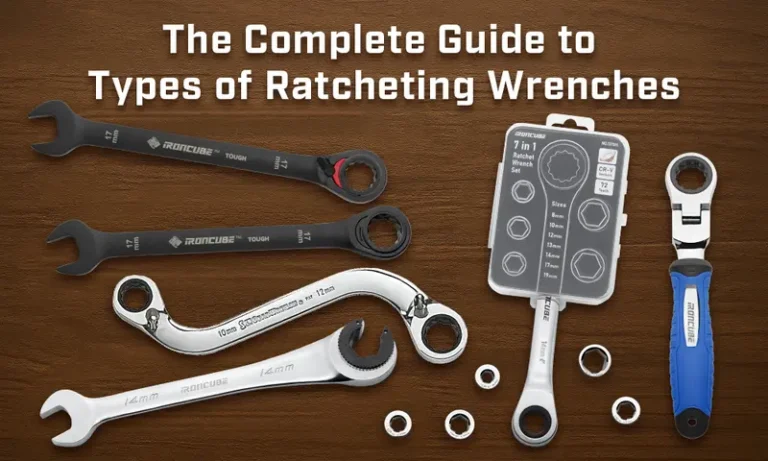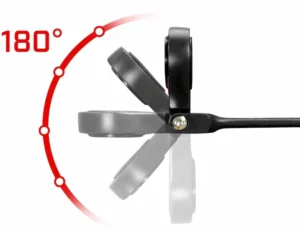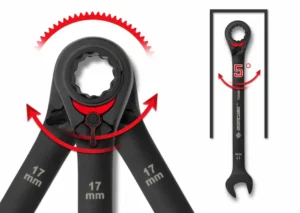Look, I’ve been turning wrenches for over 15 years. Here’s the thing most people don’t realize about ratcheting wrenches. Whether you’re a weekend warrior fixing your motorcycle or just someone trying to tackle that stubborn bolt under the sink, understanding the different types of ratcheting wrenches can save you hours of frustration and bloody knuckles. Let me break down 8 crucial types that actually matter when you’re elbow-deep in an engine bay.
What Makes a Ratcheting Wrench Different?
Here’s what sets ratcheting wrenches apart: that satisfying click-click-click sound. Unlike traditional wrenches that require you to completely remove and reposition after each turn, ratcheting wrenches use an internal gear mechanism (typically 72 teeth) that lets you work in spaces where your hand can barely move 5 degrees. Trust me, once you use one in a tight spot, you’ll never go back.
The 8 Essential Types of Ratcheting Wrenches You'll Actually Use
1. Standard Combination Ratcheting Wrenches
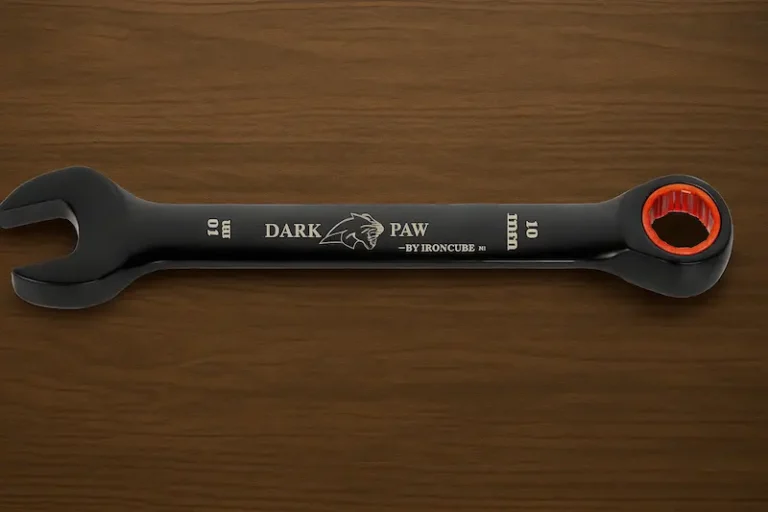
This ratchet wrench is the most common type of ratchet wrench. One end of this standard ratchet wrench has a ratchet mechanism that uses an internal gear and pawl design to allow the wrench to rotate continuously without being removed, enabling quick tightening or loosening of nuts and bolts. The other end has a conventional open-end wrench. This mechanical advantage is particularly useful in situations where space is limited and repetitive work is required.
One end has the ratcheting box, the other has an open end.
Ironcube’s 16-piece Metric & SAE Set caught my attention because:
Key highlights
- 72-tooth mechanism: Only needs a 5-degree swing (crucial when you’re working behind a water pump)
- Black chrome finish: Not just for looks – it actually resists dirt buildup
- Wax canvas storage bag: Survived three months in my truck bed without falling apart
- Twelve-sided design: The twelve-sided design of the wrench head fits tightly with the multi-sided nut, reducing the risk of slippage and delivering greater torque.
Price reality check: $47.29 (here’s what that actually gets you: professional-grade tools that won’t round off bolt heads)
User verdict: 4.8/5 based on 389 verified reviews – but here’s what they’re not telling you: the 10mm will still mysteriously disappear.
Real-world application
Last week, a user replaced the alternator bolts on a Honda Civic using the 13 mm ratchet wrench from this set. The ratchet end allowed him to easily complete the job without having to remove the entire air intake.
User verdict
Amazon rating: 4.8/5, based on 389 verified reviews.
“The tools are good quality and fit very well. I’m a tradesman in my career and these hold up well. Only problem is I used one of the bigger sizes for first time and ratcheting mechanism came out and won’t go back together. Overall great product.” said a customer who gave a 4.0 rating.
Types of Ratcheting Wrenches - Flex Head Ratcheting Wrench
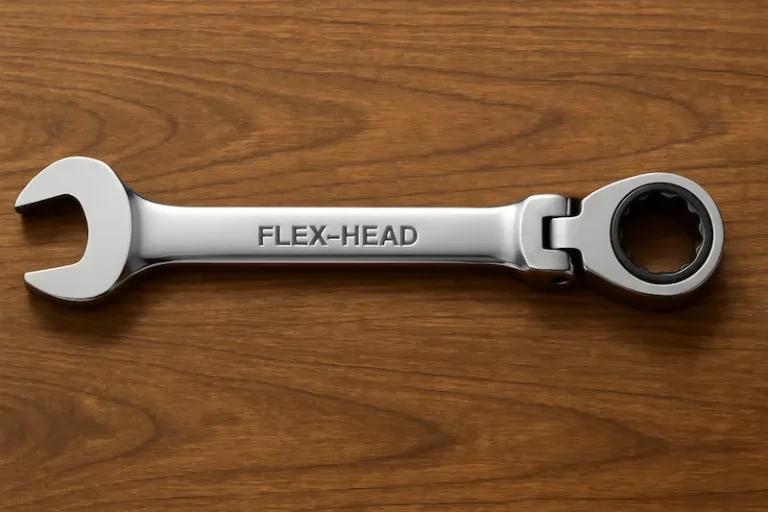
The Flex Head Ratcheting Wrench is a ratchet wrench with a head that can rotate 180° to enable flexible tightening operations in confined spaces. It is a professional ratchet wrench set that combines flexibility, high efficiency, and durability. Its most distinctive feature is that the head supports 180° rotation. It was first introduced to the market by the GearWrench brand.
This is a 180° rotatable ratchet wrench made of highly durable chrome-vanadium steel, combining a ratchet head and an adjustable head design. Its most distinctive feature is that the top of the wrench can be flexibly adjusted to change direction, allowing you to operate it easily in confined spaces.
Key highlights
- Flexible head: Supports 180° rotation, greatly improving operability in narrow/corner locations.
- 72-tooth precision ratchet structure: Requires only approximately 5° of swing angle, ensuring efficient torque in confined spaces.
- Full size coverage: Primarily based on SAE standard sizes, ranging from 1/4″ to 3/4″, with 11 specifications to meet the daily maintenance needs of automobiles and motorcycles.
- Highly durable material: Made of chromium-vanadium steel with a black industrial coating, offering excellent corrosion resistance and long-term durability.
User verdict
Amazon rating: 4.4/5, based on 172 verified reviews.
Positive review: “It’s hard to get a decent set of reversible wrenches with the lever and in increments of 1mm and at such a good price. — A user who gave a rating of 5.0 commented as follows.
Negative review: “Love the color and direction change lever. They are very thick on the ratchet end, like 5/8″ thick on the 19mm. Too thick for tight spots.” — This is how a user who gave a 3.0 rating described it.
Types of Ratcheting Wrenches - Reversible Ratcheting Wrench
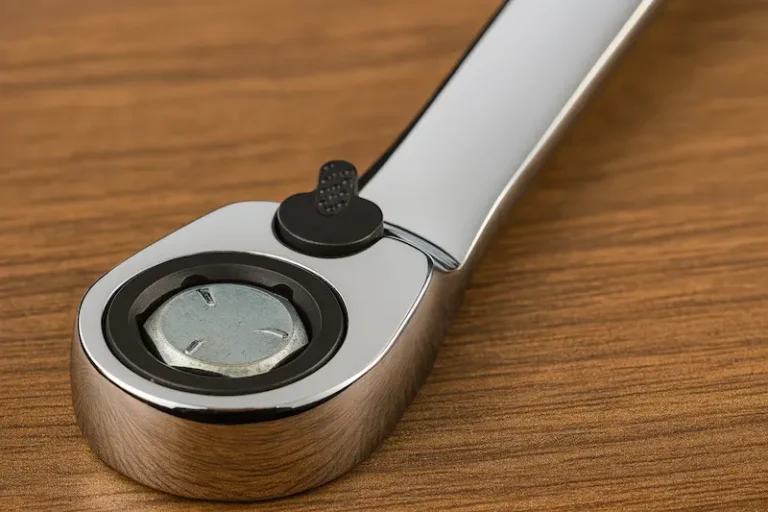
A reversible ratchet wrench is a specialized manual tool designed for efficient tightening or loosening of bolts and nuts. Its built-in ratchet mechanism enables continuous operation without the need to repeatedly disassemble and reposition the wrench. A key feature of the reversible ratchet wrench is its directional switch (lever or knob), allowing users to quickly and easily switch the wrench’s rotation direction (from clockwise to counterclockwise, and vice versa).
The Ironcube Reversible Set uses a red engineering plastic switch that’s supposedly as tough as steel. Skeptical? Me too. But after dropping it off my workbench twelve times (don’t ask), it’s still working perfectly.
Key highlights
- The complete set includes 12 metric sizes ranging from 8–19 mm, featuring a reversible ratchet mechanism + flip switch for quick switching between tightening and loosening directions.
- The ratchet has 72 teeth and a swing angle of only about 5°, making it suitable for working in confined spaces.
- The surface has a black matte coating, which is said to enhance dirt resistance and rust prevention.
User verdict
Amazon rating: 4.4/5 (approximately 160 reviews), with 74% being 5 stars, approximately 12% being 4 stars, approximately 6% being 3 stars, and approximately 8% being low ratings.
Positive review:
“Been using them for a few weeks at work now.
They are well made, the gearing and selector are smooth. The bag is good also. I have all my wrench sets in bags because it is easier to keep my Toolbox organized and clean.” – — A user who gave a rating of 5.0 commented as follows.
Negative review: “Would not recommend trying to brake tight bolt loose will jam gear … has rubbery plastic holding flip flop into wrench .thay brake very easy with no warranty unless within return date . Look great still need better design get rid of the rubber flip switch housing .” – This is how a user who gave a 3.0 rating described it.
Types of Ratcheting Wrenches - Stubby Ratcheting Wrenches
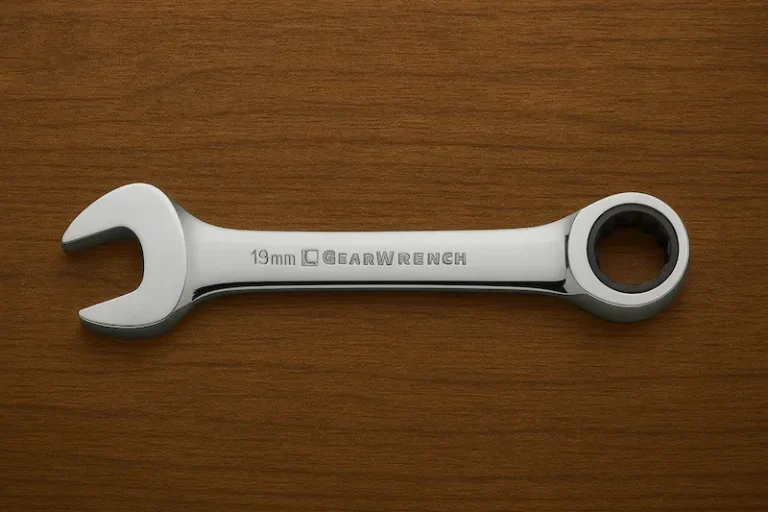
The Stubby Ratcheting Wrench is essentially a shortened version of a ratchet combination wrench. Like a regular ratchet wrench, the Stubby Ratcheting Wrench can also be made into a reversible, flex head, and other styles. It has all the advantages of a standard ratchet wrench – such as minimal swing arc, built-in ratchet, and slim head – but the handle is shortened, making it ideal for working in small, confined spaces.
Key highlights
- Standard: 6-8 inches
- Stubby: 3-4 inches
- Ultra-stubby: Under 3 inches
Types of Ratcheting Wrenches - Double Box-End Ratcheting Wrench
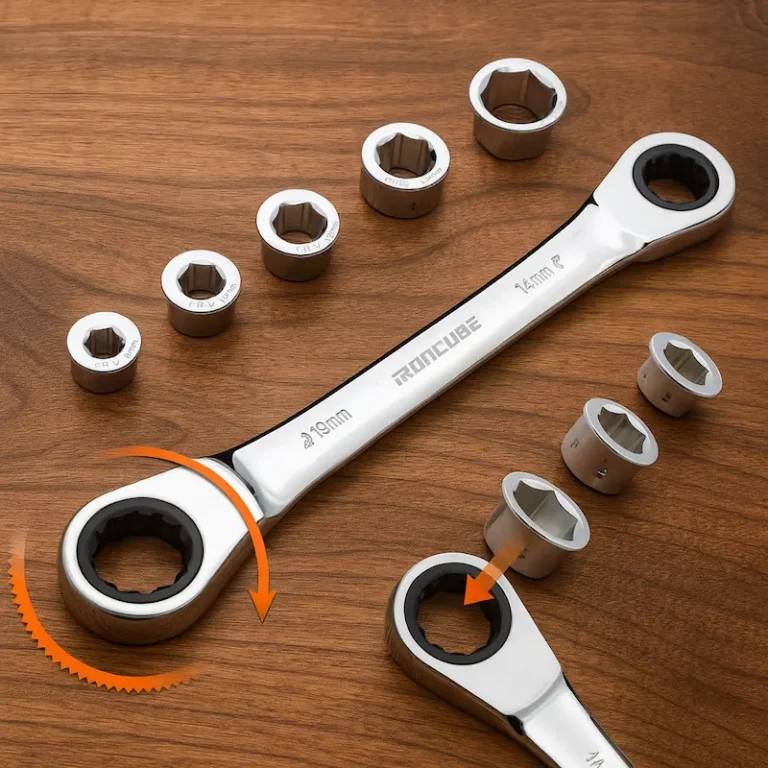
This is a ratchet wrench specifically designed for efficient mechanical operations. Its distinctive feature is that both ends of the wrench feature a closed-end hex ratchet structure, typically with different sizes at each end, enabling it to accommodate two different bolt specifications simultaneously. Unlike conventional wrenches, it is equipped with an internal ratchet mechanism, eliminating the need to remove and reinsert the nut or bolt after each rotation. Instead, it can be operated continuously by simply swinging it back and forth, significantly enhancing operational efficiency. Additionally, the closed hexagonal head design provides a more secure grip on bolts, preventing slippage and reducing wear and damage to the edges of the bolts. This wrench is particularly suitable for use in confined spaces, restricted work areas, and environments requiring rapid continuous operation, such as automotive repair, mechanical maintenance, and equipment assembly. It is an essential high-efficiency tool for professional technicians and maintenance personnel.
Key highlights
Double Box-End Design: Both ends feature Box-End heads, typically with different sizes or specifications at each end.
Built-in Ratchet Mechanism: The internal structure employs a ratchet gear mechanism (typically with 72 or more teeth), offering a small swing angle and suitability for use in narrow spaces.
Non-open design: Compared to open-end wrenches, the closed flower head provides better grip on bolts, reducing the risk of slippage.
Typically fixed angle or offset: The wrench ends are often designed with a certain angle offset (generally 15° or more) to improve accessibility in space-constrained locations.
Types of Ratcheting Wrenches - Brake Line Ratcheting Wrench
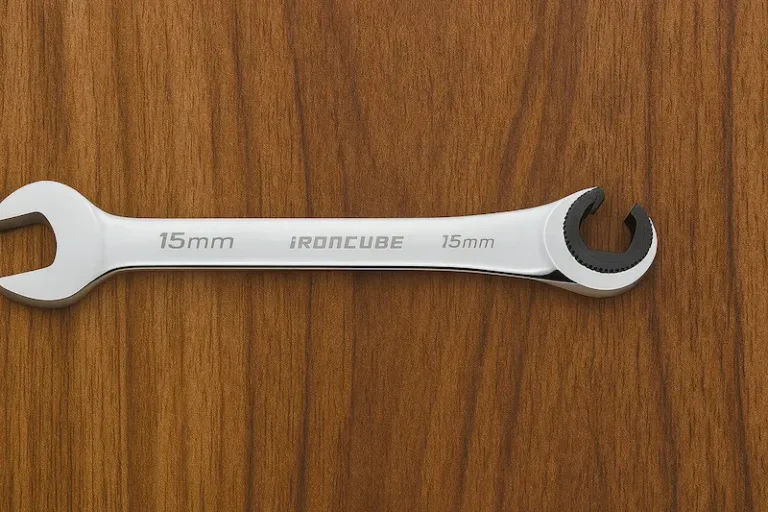
The Brake Line Ratcheting Wrench is a specialized tool designed for installing and removing nuts on brake lines, fuel lines, or refrigerant lines in vehicles such as cars and motorcycles. These lines typically use what are known as Flare Nuts, which have a delicate structure and are made of softer materials, making them prone to slipping or damaging the edges of the nuts when using ordinary open-end wrenches. The Brake Line Ratcheting Wrench features a specially designed semi-enclosed hexagonal shape that almost completely covers the nut’s hexagonal section, leaving only a small opening to fit over the pipe. This design retains the pipe-penetrating functionality of a standard open-end wrench while providing the secure grip of a hex wrench.
Additionally, the wrench incorporates a high-tooth-count ratchet mechanism, allowing users to continuously rotate the nut by simply moving the wrench back and forth in tight spaces, eliminating the need to repeatedly remove and reposition the tool, thereby significantly improving work efficiency. Compared to traditional fixed open-end wrenches, the Brake Line Ratcheting Wrench not only effectively prevents nut slippage and deformation but also significantly improves operational speed and convenience. It is an indispensable high-efficiency professional tool for the installation, removal, and maintenance of tubing in braking systems, fuel systems, air conditioning systems, and other applications.
Key highlights
- Insurance Bite and Anti-Slip Design: The opening of the Brake Line Ratcheting Wrench surrounds the hex nut beyond that of ordinary open-end wrenches, providing a more secure grip and reducing the risk of rounding and slipping.
- Built-in Ratchet Mechanism: The Brake Line Ratcheting Wrench is equipped with a 72-tooth high-precision ratchet system, requiring only approximately 5° of movement to continue rotating, significantly improving efficiency, particularly suitable for operations in narrow spaces.
- Dual-Function Design: One end of the Brake Line Ratchet Wrench features a ratchet opening for quick tightening or loosening; the other end has a standard opening for high-torque tightening or removing stubborn nuts.
- Professional-grade application and materials: According to ironcube products, all sets are 10–17 mm six-piece sets, forged from chromium-vanadium steel with a thickened plating treatment, offering corrosion resistance and ease of storage and portability.
User verdict
Amazon rating: 4.4/5 (approximately 160 reviews), with 71% being 5 stars, approximately 18% being 4 stars, approximately 3% being 3 stars, and approximately 8% being low ratings.
Positive review:
“Great use for master cylinder line, bleed valve, battery terminal, steering pump fittings but it should include some size like 18mm.” — A user who gave a rating of 5.0 commented as follows.
Negative review: “Your not getting a 16 mm which is what I was looking for unfortunately I missed that overall appears to be made well not sure why they skip the one wrench I needed. .” – This is how a user who gave a 1.0 rating described .
Best Ratcheting Brake Line Wrench for 2025: Professional Buying Guide & Reviews
Types of Ratcheting Wrenches - Metric S Shape Reversible Double Box Ratcheting Wrench Set
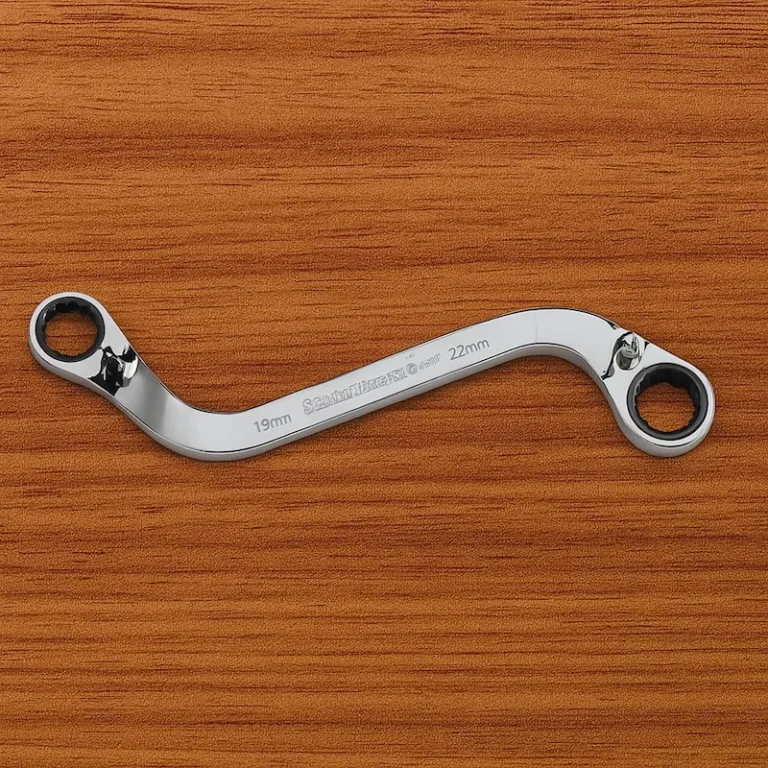
The Metric S Shape Reversible Double Box Ratcheting Wrench Set is a professional-grade wrench set, with each tool featuring a 12-point hex ratchet head at both ends and an integrated directional switch lever, allowing for easy switching between forward and reverse directions. Its unique S-shaped crescent design allows the tool to maneuver around obstacles, with no offset at the 0° end, making it ideal for use in extremely narrow corners.
The ratchet features a 72-tooth high-tooth count structure, requiring only approximately 5° of movement to continue rotating—significantly less than the 30° required by traditional wrenches—greatly enhancing efficiency in confined spaces. Made from high-strength alloy steel with a bright chrome-plated finish, it combines durability and corrosion resistance. It also features an off-corner loading design, enabling better engagement with nuts and reducing damage to rounded edges.
Adjustable Ratcheting Spanner Wrench
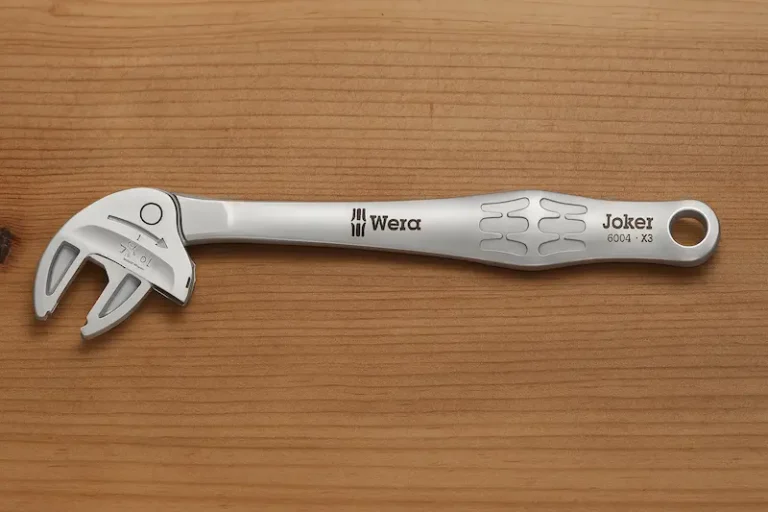
The Adjustable Ratcheting Spanner Wrench is a versatile tool that combines an adjustable open-end wrench with a ratchet mechanism, specifically designed for applications requiring flexible adaptation to different nut sizes and rapid rotation in confined spaces. The opening size can be adjusted via a sliding or threaded mechanism, typically covering a range from approximately 7 mm to 10 mm (or wider), eliminating the need to carry multiple fixed-size wrenches. Additionally, the built-in ratchet gear and direction-switching mechanism allow continuous rotation by simply moving the tool back and forth, eliminating the need to reposition the tool each time, significantly improving assembly and disassembly efficiency. It is particularly suitable for mechanical repairs, equipment calibration, and on-site work environments. Within a compact tool, it combines multi-size coverage, efficient operation, and space-saving features, making it a practical choice for professional technicians and precision workers.
What Really Matters: Tooth Count Explained
Everyone obsesses over tooth count. Here’s the truth:
- 72 teeth (5° swing): Industry standard, best balance
- 90 teeth (4° swing): Marginally better in tight spaces
- 120 teeth (3° swing): Smooth as silk, but more delicate
Unless you’re working in spaces tighter than a submarine engine room, 72 teeth handles 95% of jobs perfectly.
Learn more about the Use Ratchet Wrench
Material Matters (But Not How You Think)
Every manufacturer screams “CHROME VANADIUM STEEL!” like it’s magic. Here’s what actually matters:
- Chrome Vanadium (Cr-V): Standard, durable, affordable
- Chrome Molybdenum (Cr-Mo): Slightly tougher, 20% more expensive
- S2 Steel: Impact-rated, overkill for hand tools
The finish matters more than the base metal:
- Chrome: Pretty, slippery when oily
- Black oxide: Grips better, hides wear
- Phosphate: Best grip, looks industrial
Check the 32 types of wrenches
Storage Solutions That Actually Work
Forget the fancy foam cutouts. They look nice for a week. Here’s what survives real use:
- Wax canvas rolls: Water-resistant, compact, durable
- Rail organizers: Great for garage walls
- Magnetic holders: Perfect for toolbox lids
- Individual clips: Yes, more expensive, but you’ll never lose another wrench
The Bottom Line
You don’t need every type of ratcheting wrench ever made. Start with a quality combination set in the sizes you’ll actually use. Add specialty types as specific needs arise.
My everyday carry after all these years?
- 8-19mm combination ratcheting set
- 10mm and 13mm flex-head (because everything uses these)
- One adjustable for emergencies
That’s it. These handle 95% of what comes up.
Final Thoughts: Start Right, Buy Once
Here’s the thing – good ratcheting wrenches are an investment, not an expense. That $120 set seems expensive until you’re lying under a car at 10 PM, and the wrench just works. No slipping, no stripping, no cursing.
Start with a solid combination set from a reputable brand. Use them, abuse them, learn what you need more of. Then expand thoughtfully. Your future self (and knuckles) will thank you.
Remember: The best ratcheting wrench is the one that fits the bolt you’re trying to turn. Everything else is just marketing.
